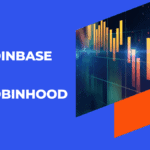Table of Contents
What is Data Science?
Data is frequently referred to as the new gold in the digital era. It’s a useful tool that, in the right hands, may provide revelations, innovations, and insights.
The secret to releasing the potential buried behind the enormous amount of data is data science. We shall examine the area of data science in this post, as well as its importance, uses, and prospects going forward.
Statistical analysis is a crucial component of data science as it involves identifying and analyzing patterns and trends present in data.
1. Predictive analytics: Using past data to accurately predict future results.
2. Machine Learning: Developing algorithms that utilize data to learn and make predictions.
3. Data mining: The artful extraction of insightful information from large datasets.
4. Big Data Technologies: Controlling massive data volumes that are too big for traditional data processing instruments to handle.
By merging these techniques, data science empowers industries like finance, healthcare, and marketing to make informed, data-driven decisions that yield real-world impact.
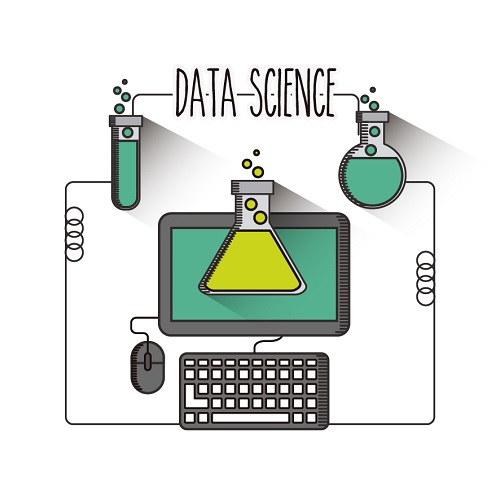
Need for Data Science tools
In the rapidly evolving digital landscape of today, data science stands as an indispensable skill. Whether you’re a seasoned data scientist or just stepping into the field, the right tools are key to enhancing your productivity.
In this article, we’ll delve into the top ten tools that every data scientist should have at their disposal to unlock the full potential of their datasets. These tools are not only pivotal for extracting valuable insights but also vital contributors to a data scientist’s overall success.
Top 10 tools for Data analysis and visualization
SAS
In the domain of Data Science, SAS, which is short for Statistical Analysis System, assumes a critical role. This software suite is renowned for its extensive toolkit and features tailored for data analysis and statistical modeling.
SAS is a comprehensive and advanced software suite well-known for its expertise in sophisticated analytics, business intelligence, and data governance.
Within its wide-ranging scope, it encompasses a plethora of tools and capabilities that empower users to unravel the intricacies of data, craft insightful reports, and guide data-informed decisions across various fields, including statistics, data science, and the business sector.
Key Functions of SAS in Data Science
1. Data Analysis: SAS provides a comprehensive platform for in-depth data analysis, helping data scientists explore, manipulate, and summarize datasets effectively.
2. Statistical Modeling: Data scientists use SAS to perform advanced statistical modeling, regression analysis, and hypothesis testing, enabling them to extract valuable insights from data.
3. Data Cleaning and Transformation: SAS aids in data preprocessing, handling missing data, imputing values, and performing feature engineering, ensuring data quality.
4. Data Visualization: SAS offers tools for creating compelling data visualizations, and facilitating the communication of data patterns and insights.
5. Data Management: SAS includes data management and integration capabilities, simplifying data import, export, and integration from diverse sources.
7. Reporting: Data scientists often use SAS to generate reports and dashboards to present their findings and analysis results effectively.
SAS is particularly valued in industries with strict regulatory requirements, such as healthcare and finance, thanks to its reputation for data integrity and reliability. It provides a comprehensive environment for data analysis in the realm of data science.
MATLAB
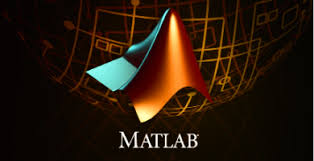
MATLAB, short for ‘MATrix LABoratory,’ is a robust software platform widely employed for mathematical and computational tasks. It excels in matrix and vector manipulation, particularly for linear algebra and numerical computations. MATLAB provides an intuitive environment for executing scripts and functions, enabling complex mathematical operations.
MATLAB key features
1. Mathematical Computation: Equipped with a comprehensive library of mathematical functions for tasks like equation solving, differentiation, and integration.
2. Matrix Operations: Exceptional for solving linear equations, eigenvalue analysis, and singular value decomposition.
3. Data Visualization: Offers powerful tools for creating visual representations of data, such as plots and charts.
4. Scripting and Programming: Allows for custom script and function creation using MATLAB’s programming language.
5. Simulations: Widely used for modeling and simulating complex systems and processes, including physical and control systems.
6. Toolboxes: MATLAB offers specialized toolboxes for image processing, signal processing, and machine learning, expanding its capabilities.
7. Interactivity: A graphical user interface (GUI) simplifies data and model manipulation for those who prefer a visual approach.
8. Cross-Disciplinary Application: MATLAB finds applications across various fields, including engineering, physics, finance, biology, and more, owing to its versatility.
Apache Spark
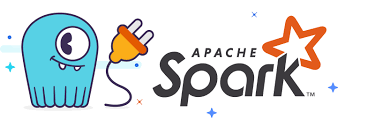
Apache Spark, an open-source distributed computing system, is designed for the processing and analysis of extensive data sets. Celebrated for its swiftness, scalability, and ease of use, Apache Spark provides a user-friendly high-level interface for managing substantial data processing operations.
Key Apache Spark functions include
1. In-Memory Processing: Apache Spark excels with in-memory data handling, delivering superior performance over traditional disk-based data processing frameworks.
2. Distributed Processing: This technology distributes data and processing across a cluster of machines, facilitating parallel processing and resource efficiency.
3. Data Processing Libraries: Apache Spark provides versatile libraries for diverse data tasks, including batch processing, interactive queries, streaming data, and machine learning.
4. Ease of Use: Accessible through APIs in multiple languages (Scala, Java, Python, R), making it inclusive for developers of various backgrounds.
5. Versatility: It accommodates various data types, from structured to unstructured, and supports both batch and real-time streaming processing.
6. Resilience: Apache Spark’s resilience features enable recovery from node failures, ensuring uninterrupted data processing.
7. Integration: Seamless integration with popular big data tools and frameworks, such as Hadoop, Hive, and HBase.
R Programming
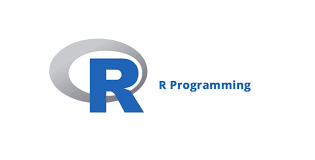
R, a programming language and environment, is purpose-built for statistical computing and data analysis. Its versatile capabilities have made it a cornerstone in diverse domains, encompassing statistics, data science, and bioinformatics.
Some pivotal characteristics of R comprise
1. Data Manipulation
At the core of a data scientist’s work, data manipulation plays a pivotal role. In this domain, R provides invaluable assistance, delivering robust tools for data cleansing and transformation. Packages such as dplyr, tidyr, and their counterparts streamline the intricate art of data manipulation.
2. Statistical Analysis
Statistical analysis in R programming encompasses the utilization of R’s comprehensive array of statistical functions and packages for data analysis, hypothesis testing, and deriving valuable insights from data. R stands out as a favored choice for statistical analysis, attributed to its adaptability, diverse range of statistical techniques, and the capacity to produce research that can be replicated.
3. Data Visualization
Data visualization is a fundamental aspect of any data science project. In this field, R excels by creating customizable and polished visual representations with finesse. Harness the capabilities of the ggplot2 package to easily conceptualize, present, and share your insights.
4. Package Ecosystem: R boasts an extensive ecosystem of community-contributed packages, significantly enhancing its functionality across a spectrum of tasks.
5. Reproducibility: R facilitates reproducible research through the creation of scripts and documents that meticulously document data analysis processes, ensuring transparency and replicability.
6. Interactivity: R caters to diverse user preferences by offering both a command-line interface and user-friendly graphical interfaces, accommodating a wide range of data analysis needs.
Jupyter Notebook
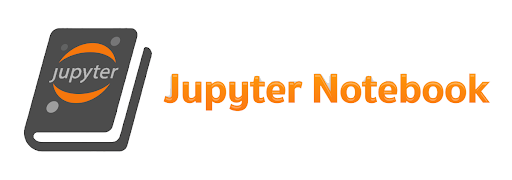
A Jupyter Notebook serves as an open-source web application enabling the creation and sharing of documents encompassing live code, mathematical equations, visualizations, and explanatory text.
It enjoys widespread popularity among data scientists, researchers, and educators for its capacity for interactive computing and data analysis.
Jupyter notebooks are frequently employed with various programming languages, such as Python, R, Julia, and others, although Python stands out as the most prevalent choice.
Features of Jupyter Notebook
1. Cells
Notebooks are compartmentalized into cells, with two primary categories: code cells and markdown cells.
- Code Cells: These serve as your workspace for composing and executing code. Code cells can be executed individually, with results promptly displayed below each cell.
- Markdown Cells: These cells are intended for documentation, explanations, and notes. Markdown syntax allows you to format text, facilitating the creation of enriched text documents.
2. Live Code Execution
The capability to execute code directly within code cells is a distinguishing feature of Jupyter notebooks. This allows for immediate visualization of results, including text, plots, and graphs, situated just below the code cell.
3. Rich Output
Jupyter Notebooks offer extensive support for various output formats, encompassing text, HTML, images, interactive plots, and widgets. This versatility positions it as a potent tool for data visualization and reporting.
4. Interactivity
Jupyter Notebooks empower real-time interaction and data manipulation. You can amend code, re-run cells, and instantly observe the updated outcomes.
5. Integration
Jupyter notebooks seamlessly integrate with diverse programming languages, libraries, and tools. For instance, you can seamlessly incorporate Python libraries like NumPy, pandas, Matplotlib, and SciPy into your notebook.
MongoDB
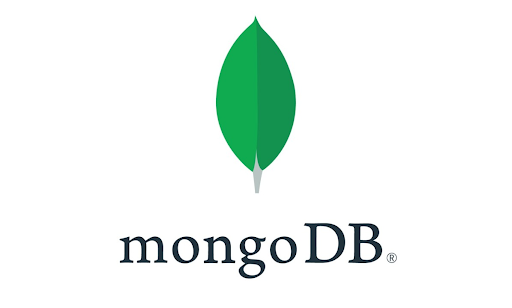
MongoDB stands as a well-liked, open-source, NoSQL (non-relational) database management system.
Its primary design objective is to store and oversee extensive data volumes, rendering it exceptionally suitable for contemporary web and mobile applications that demand adaptable and expandable data storage.
MongoDB garners recognition for its document-centric data model, malleability, and user-friendly nature.
Characteristics of MongoDB
MongoDB employs a document-centric approach, resembling JSON objects. Each document may possess a unique structure, allowing for variability within document fields. This schema-less design affords flexibility, making it apt for semi-structured or unstructured data.
2. Collections
Documents are grouped into collections, akin to tables in traditional relational databases. Collections can encompass documents of diverse structures, bestowing versatility for a wide array of data types.
3.NoSQL
MongoDB falls under the NoSQL database category, obviating the need for the conventional SQL language in data querying and management. Instead, it employs a query language and API tailored for handling document-based data.
4. High Performance: MongoDB delivers swift read and write operations, leveraging in-memory storage and efficient indexing. This ensures rapid data retrieval and modification, making it ideal for data-intensive applications.
5. Horizontal Scalability: MongoDB is esteemed for its capacity to horizontally scale, accommodating substantial data volumes and traffic by distributing data across multiple servers or clusters. This attribute suits applications with rapidly expanding data requirements.
Tableau

Tableau is a user-friendly data visualization and business intelligence (BI) software tailored to convert data into interactive and visually engaging insights.
It empowers users to construct interactive dashboards, report displays, and chart presentations without the necessity for intricate programming or technical proficiency.
Tableau has gained widespread popularity in various industries, serving as a preferred tool for data-driven decision-making and efficient data communication.
The key function of Tableau
1. Data Connection
Tableau possesses the ability to establish connections with various data sources, encompassing databases, spreadsheets, cloud services, and web data connectors. This grants you the capability to work with data originating from diverse locations.
2. Data Preparation
It furnishes functionalities for data transformation, allowing for the cleansing, reshaping, and merging of data from disparate sources. This ensures that the data is primed for subsequent analysis and visualization.
3. Drag-and-Drop Interface
Tableau boasts an instinctive drag-and-drop interface, enabling users to swiftly craft visualizations and dashboards. You can easily select dimensions and measures, then drop them onto the canvas to generate charts.
4. Interactive Visualizations
Tableau provides robust support for an extensive array of visualization types, spanning bar charts, scatter plots, maps, and more. Users can actively engage with the data, employing functions like filtering, sorting, and drilling down into specific details.
Official website- www.tableau.com
Minitab
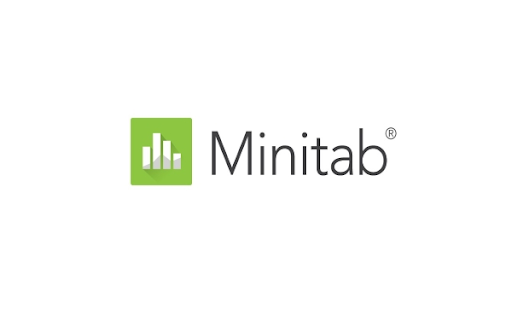
Minitab, developed by Minitab, Inc., is a robust statistical software package that has revolutionized the way data is analyzed and interpreted across various fields. In this comprehensive guide, we will delve deep into the multifaceted world of Minitab, exploring its features, applications, and the substantial impact it has on statistical analysis and quality improvement.
Key Minitab features and capabilities:
- Data Analysis: Minitab offers a diverse array of tools for data exploration and analysis. Users can effortlessly import data from various sources, clean and transform datasets, and perform descriptive statistics to unveil valuable insights.
- Statistical Modeling: Minitab supports an array of statistical techniques, including hypothesis testing, regression analysis, analysis of variance (ANOVA), and multivariate analysis, enabling data-driven conclusions and predictions.
- Data Visualization: The software presents an extensive repertoire of options for crafting visual representations of data, including histograms, scatterplots, and control charts, facilitating data pattern recognition.
- Quality Improvement: Minitab is a prominent tool in quality control and Six Sigma initiatives, pinpointing areas for quality enhancement and providing statistical methods for achieving desired outcomes.
- Designed Experiments: It enables the planning and analysis of designed experiments, crucial for optimizing processes and products.
- Reliability Analysis: Minitab equips users with tools to assess the reliability and performance of products and systems.
- Statistical Process Control (SPC): Minitab plays a pivotal role in monitoring and controlling processes through SPC tools and control charts, ensuring consistent quality in manufacturing and various processes.
- User-Friendly Interface: Minitab’s intuitive interface is designed to accommodate users with varying levels of statistical expertise, offering both menu-driven and script-driven approaches.
Rapidminer
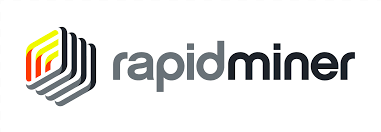
RapidMiner is a powerful data science and machine learning platform designed to streamline and enhance your data analysis and predictive modeling processes.
A comprehensive set of features, including
1. Data Integration: RapidMiner seamlessly connects to diverse data sources, facilitating the integration of data from databases, spreadsheets, and big data platforms.
2. Data Preprocessing: Ensure your data is pristine with RapidMiner’s suite of data cleaning and transformation tools. Address missing values, identify outliers, and standardize data effortlessly.
3. Data Exploration and Visualization: RapidMiner empowers you to visualize your data effectively, providing a range of visualization tools to extract insights from your datasets.
4. Machine Learning and Modeling: With a vast library of machine learning algorithms for classification, regression, clustering, and association rule mining, RapidMiner enables you to develop and evaluate predictive models.
5. Workflow Automation: Optimize your workflow with automation features that allow for efficient experimentation with different models and hyperparameters.
6. Model Deployment: Take your predictive models from concept to application with ease, deploying them within the platform or exporting for integration into other systems.
7. Scalability: RapidMiner is designed to handle datasets of all sizes, making it suitable for a broad spectrum of data projects, from simple analyses to complex big data tasks.
8. Collaboration: Enhance teamwork by leveraging RapidMiner’s collaborative features, which enable seamless sharing of workflows, data, and models among team members.
9. Extensions and Integrations: Explore the RapidMiner marketplace for extensions and integrations that expand its functionality, adding new algorithms, data connectors, and more.
Tensorflow
TensorFlow is a highly versatile and extensively embraced open-source machine learning framework that has been developed by the Google Brain team. This framework stands as a potent resource for constructing and deploying a wide array of machine learning models, with a particular focus on excelling in deep learning applications.
Key attributes and components of TensorFlow encompass:
1. Flexible and Scalable Architecture: TensorFlow boasts a flexible and scalable architecture, ideal for constructing various machine learning models, especially deep neural networks, geared towards tasks like image recognition and natural language processing.
2. Deep Learning Prowess: TensorFlow excels in deep learning, facilitating the creation of intricate neural networks with simplicity.
3. High-Level APIs: It offers high-level APIs, including Keras, streamlining the process of defining and training neural networks with minimal code.
4. Versatility Across Platforms: TensorFlow is platform-agnostic, supporting CPUs, GPUs, and specialized TPUs (Tensor Processing Units) designed for machine learning acceleration.
5.TensorBoard Visualization: Leveraging TensorBoard, TensorFlow enables comprehensive model analysis and visualization, simplifying the understanding of the training process and model performance.
6. Robust Community and Ecosystem: Benefitting from a thriving community, TensorFlow provides pre-built models and resources for a broad spectrum of machine learning applications. It finds extensive utility in both research and industry.
7. Production-Ready Model Deployment: TensorFlow Serving empowers you to seamlessly deploy trained machine learning models in real-world production environments, ensuring practical applicability.
8. Mobile and Embedded Device Compatibility: TensorFlow offers TensorFlow Lite, an adaptation tailored for mobile and embedded devices. This allows the deployment of machine learning models on smartphones and Internet of Things (IoT) devices.
What are the key functions of SAS in Data Science?
Data Analysis, Statistical Modeling, Data Cleaning and Transformation, Data Visualization, Data Management, Reporting
Which programming language and environment is purpose-built for statistical computing and data analysis?
R Programming
What is data mining and its role in data science?
Data mining is the artful extraction of insightful information from large datasets and plays a crucial role in identifying and analyzing patterns and trends.
What are the functions and advantages of using Apache Spark in data processing and analysis?
In-memory processing, distributed processing, data processing libraries, ease of use, versatility, resilience, and integration with other big data tools and frameworks.
What is MongoDB ?
MongoDB is an open-source NoSQL database management system.
why is it suitable for contemporary web and mobile applications?
It is suitable for contemporary web and mobile applications because of its schema-less design and flexibility in handling semi-structured or unstructured data.







